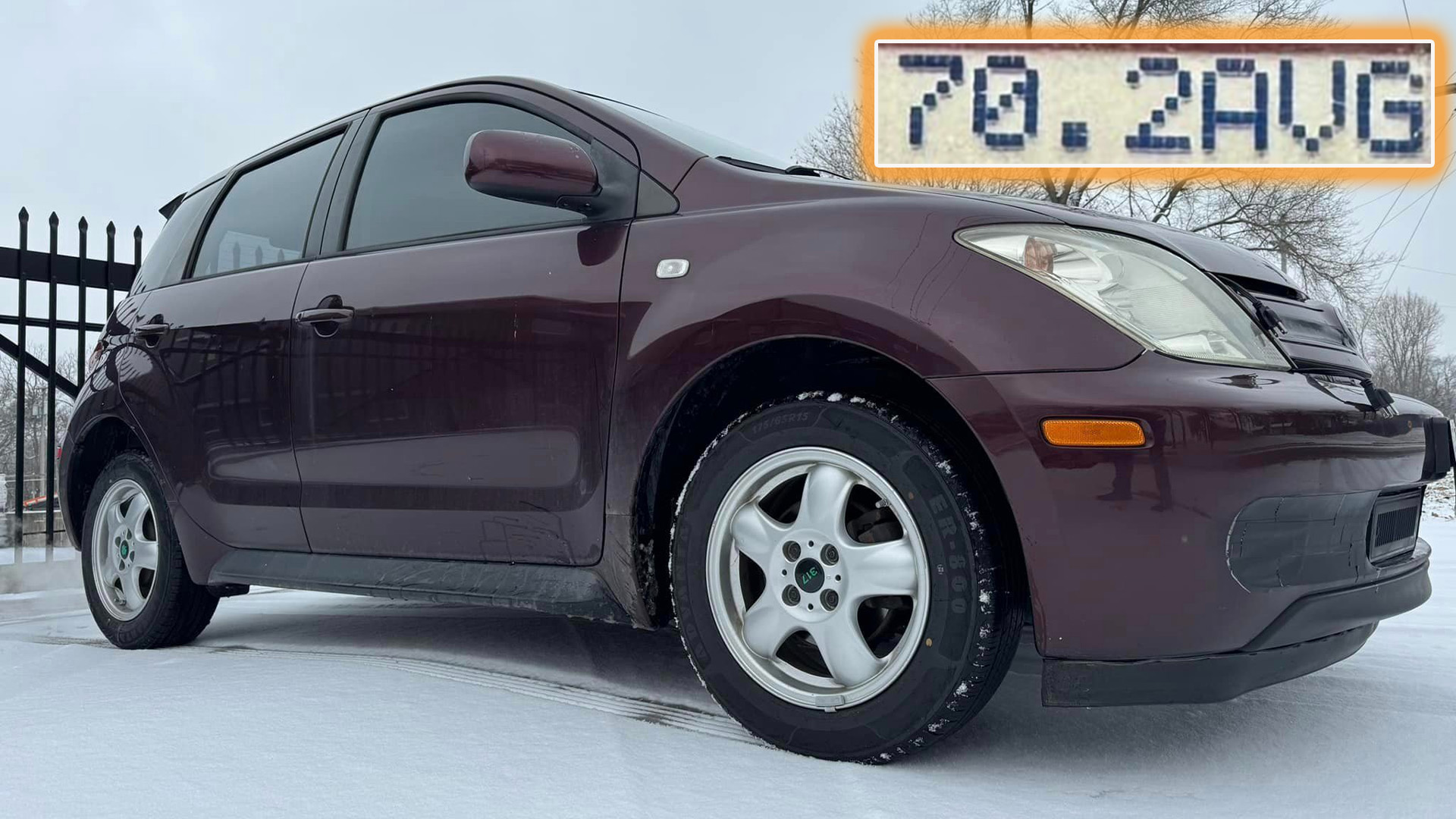

Spend any time around car enthusiasts and they’ll tell you that smiles per gallon are more important than miles per gallon. But what if you could have both? That’s the idea behind hypermiling, a relatively niche corner of car culture that’s all about maximizing fuel efficiency through mindful modifications and precise driving techniques. It’s far from a snoozefest, but don’t just take my word for it. Look at this 2005 Scion XA that’s cracking 70 mpg—more than double the EPA rating—thanks to meticulous upgrades and crazy-careful driving inputs.
It belongs to Reggie Hosier, who’s been hypermiling for years. You’ll find him all over forums like Ecomodder, Hypermiling International, and more with extremely detailed posts explaining his efficiency adventures. I first saw him pop up in the Clean MPG group on Facebook and I couldn’t believe the types of mods he’s been making to his humble hatchback.






Have you ever seen someone install a fuel injector kill switch on their daily so they can cut the engine without turning off the ignition? Or swap the mechanical fuel and power steering pumps to electric to reduce drag on their 1.5-liter four-cylinder? What about sealing the gaps in the grille while putting floor registers in the front bumper for both aerodynamic and engine temperature benefits? Those are all mods that Hosier has performed, and the list doesn’t stop there. He even added a thermostatically controlled warm air intake. That’s right, a warm air intake.
“I have always had a deep desire as a DIYer to make things more efficient on a budget,” Hosier told me. “Efficiency is addictive and can easily be made into a game with a high score that is always meant to be broken.”
In that way, it’s a lot like any other form of motorsport. Rather than chasing shorter times around a circuit or at a quarter-mile drag strip, it’s about boosting fuel mileage to new heights. Hosier uses a ScanGauge II tool to record fuel economy for every eight-mile trip to and from work, which consists of 80% city driving and 20% highway driving. Because he’s always improving the car and his driving habits, trying new things to get better numbers, it keeps things fresh while providing the obvious benefit of cost savings.
The average American spends more than $2,000 annually on fuel; Hosier paid just $361.35 in 2023. That’s the type of budget build anybody can get behind.

When I asked Hosier what’s provided the single largest gain in fuel economy, he gave a maybe surprising answer: His driving habits. “I drive carefully, imagining I have no brakes. Looking far ahead for potential traffic/pedestrian constraints and adjusting accordingly,” he explained. “Learning where it operates most efficiently and how to utilize and maximize things such as the DFCO (de-acceleration fuel cut off) feature that most OBD II vehicles have that very few people know about.”
He’s put a lot of time and effort into his Scion to get to this point, no doubt. I’m blown away simply by the amount of attention he pays to his spark plugs, indexing them so they face the intake flow and measuring side gap for better spark exposure. What does all that mean? I barely know—I drive a diesel, for goodness sake.


The reality is that few people can be bothered to care this much about fuel efficiency. Hosier “rarely” exceeds 3,000 rpm and he takes every corner with gentle ease; meanwhile, others rarely step off the gas. It’s a difference in mentality and he credits the hypermiling community for helping him learn the way of the wise.
“My goal is to continuously improve efficiency while maintaining reliability,” Hosier concluded. “The big picture is important to me. I think it would be cool to hit 70-plus miles per gallon with a daily driver that has been on the road operating successfully for 10-plus years. The one thing about continuous improvement is that it never has to end.”
And how, Reggie. And how.
Got a tip or question for the author? Contact them directly: caleb@thedrive.com